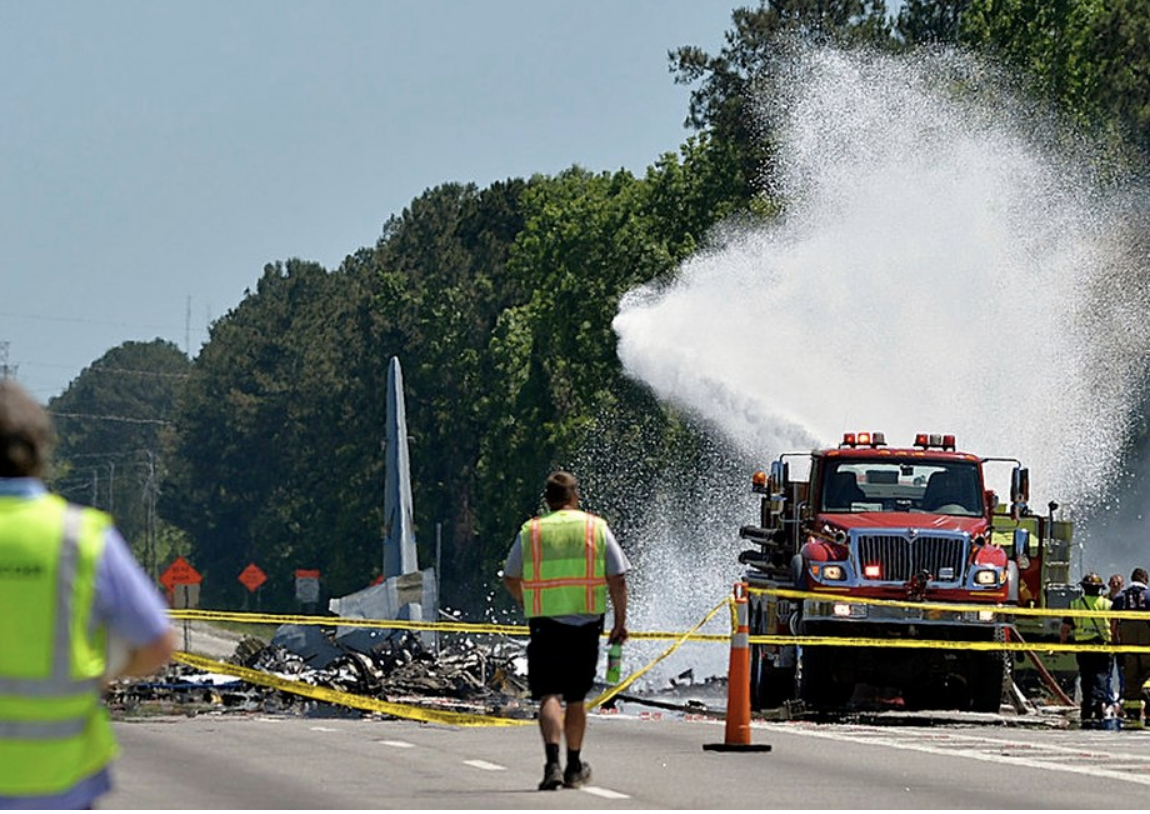Air Mobility Command released the results of its investigation into the WC-130H Hercules crash near Savannah/Hilton Head International Airport, Savannah, Georgia, May 2, that killed all nine Airmen on board.
The aircraft crew, assigned to the 156th Airlift Wing, Muñiz Air National Guard Base, Puerto Rico, was on a mission to deliver the aircraft from Savannah/Hilton Head Airport to the 309th Aerospace Maintenance and Regeneration Group at Davis-Monthan Air Force Base, Arizona.
The report says that while rolling down the runway the left outermost engine (the number one engine), experienced significant decay in RPMs and torque which substantially lowered thrust. The thrust deficiency went unrecognized by the crew until moments before liftoff when the aircraft veered left and nearly departed the runway into the grass before achieving flight. Upon initial ascent, the mishap crew failed to properly apply normal and emergency procedures to address the situation, including improper application of left rudder and making a left turn in the direction of the failed engine.
The improper application of a left rudder resulted in a left-wing stall. The aircraft descended and impacted the terrain on Georgia State Highway 21. No bystanders were harmed by the crash.
While all of the resultant actions by the crew strongly pointed to pilot error in recovering from the malfunctioning engine, maintenance practices came into question. The report says “Ground maintenance before the mission failed to properly diagnose and repair the malfunction with engine one which reoccurred during takeoff on the mishap flight.”
According to a story in the Air Force Times, “A faulty engine, serious maintenance lapses that failed to repair it, and a series of air crew mistakes before and during takeoff led to the horrific WC-130H crash May 2 that killed nine Puerto Rico Air National Guardsmen.”
The report also showed that poor morale, lack of personnel and problems with equipment at the 156th Airlift Wing, contributed. A possible “culture of complacency” and that mechanics may have cut corners, was also alluded to in the report.
The mission was to fly the aircraft to the 309th Aerospace Maintenance and Regeneration Group at Davis-Monthan Air Force Base, Arizona (commonly referred to as the Boneyard), for removal from service. The aircraft had been at KSAV for almost a month, since April 9, 2018, to undergo prescheduled fuel cell maintenance and unscheduled work on engine number one by 156 AW maintenance personnel using the facilities of the 156th Airlift Wing.
According to the report, “During the course of the investigation, several recurring factors emerged with regard to the health and low morale of the 156 AW…While several of the items are common in any organization (manning challenges for example), the number, the repetition and the combination of all the factors, highlighted up and down the chain of command at the 156 AW, may be indicative of a climate and culture of complacency. This climate could have shaped the attitudes and actions of the Mishap Maintainers to disregard T.O. guidance…”
Manning challenges were discussed in the report with Wing members repeatedly stating, “the low morale was affecting their operations and causing manpower shortfalls because many people left the unit, which caused with prolonged vacancies while hiring adequate replacements.” The report said internal processes appeared to be broken, paper work was not correct. “The Mishap Maintainers (MM1, MM2, MM3, and MM4) showed a distinct lack of motivation to ensure engine one was operationally ready for flight.”
Additionally, training of maintenance personnel was found lacking. The report says, “Although training records indicate members were qualified, 156 MXG members were lacking in requisite job skill knowledge, risk assessment and error management. Most of the members of the maintenance team who were interviewed could not say whether they had attended Maintenance Resource Management training and/or were not sure what the training included. Additionally, the Propulsion Shop Lead did not know the difference between back shop manuals and on-aircraft manuals, neither MM1 (MM is for mishap maintainer) nor MM2 realized there were troubleshooting guides in the on-aircraft manuals and relied on a back-shop manual, and MM3 could not define his role and responsibilities during a maintenance engine run.”
Other problematic concerns were the misuse of a piece of testing equipment, called an Accu-Tach which the maintainers were unable to connect to the aircraft due to not having the right connector and other procedural anomalies. “The first step of the T.O (Techical Order). required connecting the precision tachometer and, thus, the Mishap Maintainers should not have continued the engine runs, as they had not completed the first step. However, without using a precision tachometer, the Mishap Maintainers proceeded with the engine runs.”
You can see the full report here.
